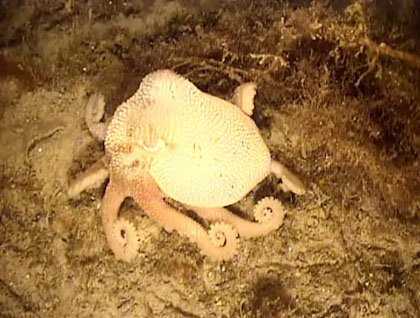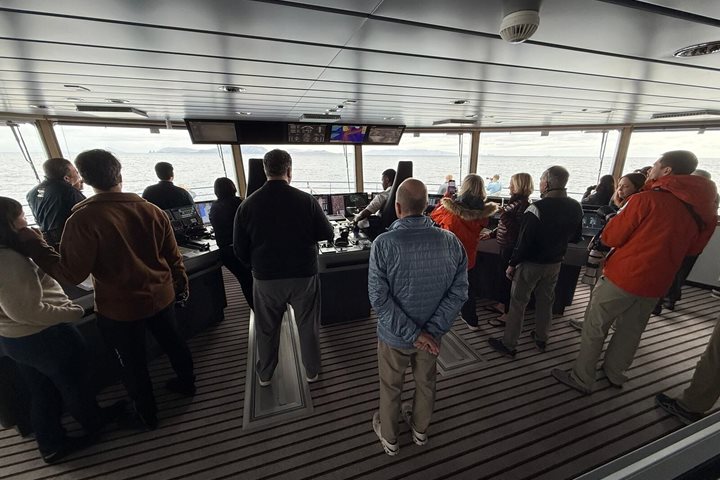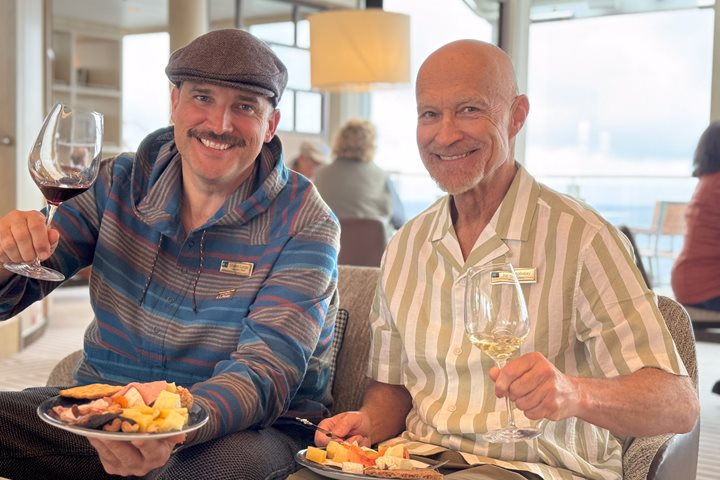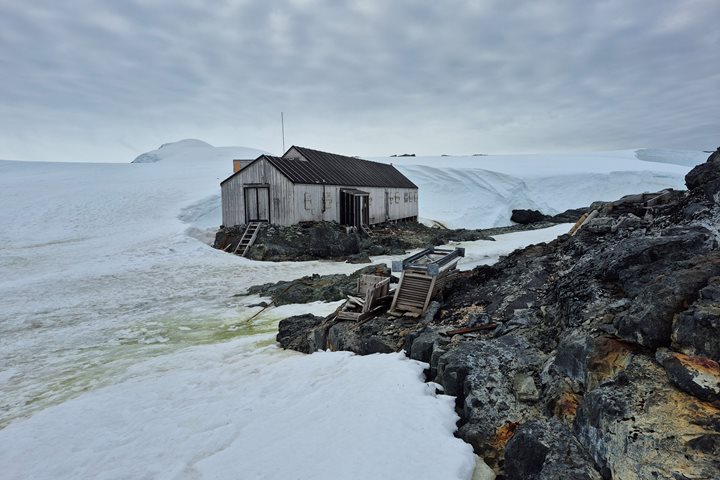The Drake Passage rolls us towards what is often called “World’s End,” but what we call our homeport during the Antarctic season, Ushuaia, Argentina. Settled on the Beagle Channel, this city is famous for skiing in the winter, and in the summer it is the starting point for many Antarctic expeditions.
However before we set foot on terra firma once again, we have two days at sea. Today, the first after an intense six days of exploring the Antarctic Peninsula, is usually a quiet one on National Geographic Explorer. Guests take advantage of being able to watch the lectures on their TVs in the cabins, copious cups of tea and coffee are drunk while finally trying to read the book brought along or catching up on world news.
For the undersea team, it is time to finish up the videos for this voyage, and prepare the gear for the next. This voyage we have taken the Remotely Operated Vehicle (ROV) to depths of 400ft (126m), revealing creatures which may have never seen the light of day before. Krill swarms bombard the light on the ROV, stirring up the bottom. Tiny octopus, no more than four inches (10cm), creep along the bottom, waiting for an unsuspecting fish to swim by or a whelk to take a wrong turn. Octopuses in Antarctica are an interesting study pertaining to climate change the warming waters of the Antarctic. Octopus have “blue blood” or rather their oxygen carrying molecules are called hemocyanin (as opposed to our hemoglobin which is red). At the sub-zero temperature of Southern Ocean, this hemocyanin is an extremely effective oxygen carrier. When octopuses from the Antarctic are moved to warmer waters (50F / 10C), they are able to transport even more oxygen effectively. This is unlike the Antarctic fish, which have a very low threshold for temperature change. In the bigger picture, this suggests while the Southern Ocean becomes warmer the octopus will fair much better than their vertebrate neighbors.
Port Lockroy is one of the most protected anchorages on the Antarctic Peninsula, and not only has a rich recent history with the British Antarctic Survey, but also a place where whales were processed in the early 1900s. While diving we explored a nearly intact blue whale skeleton with an unexploded harpoon head at the base of the skull. The water was a murky green, casting eerie shadows from our underwater lights, allowing us to only see small sections of the skeleton at a time, creating the feeling of an underwater haunted house.
Another day at sea lies ahead of us, and the hope is we will complete our expedition circle, by seeing the famous Cape Horn. Until then I’ll get back to the editing the Polar Plunge….







